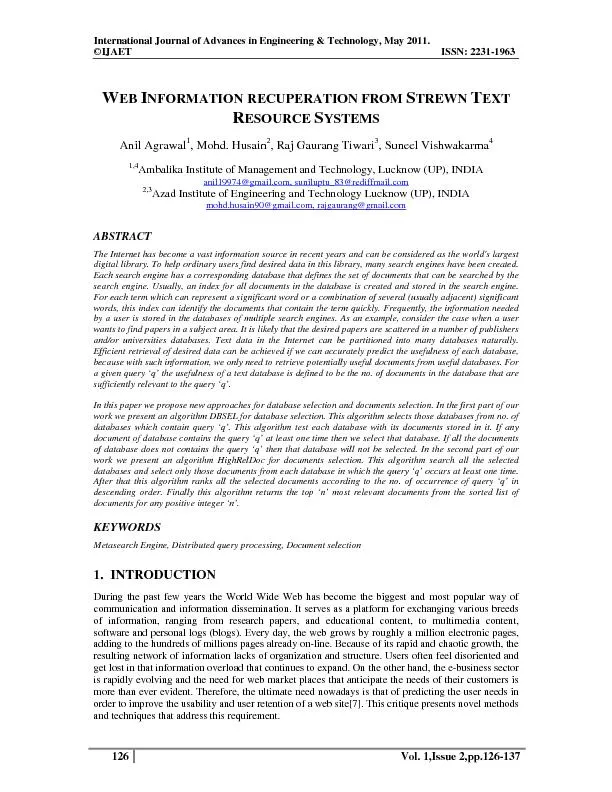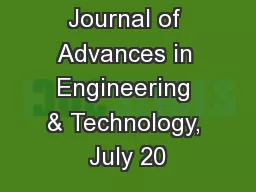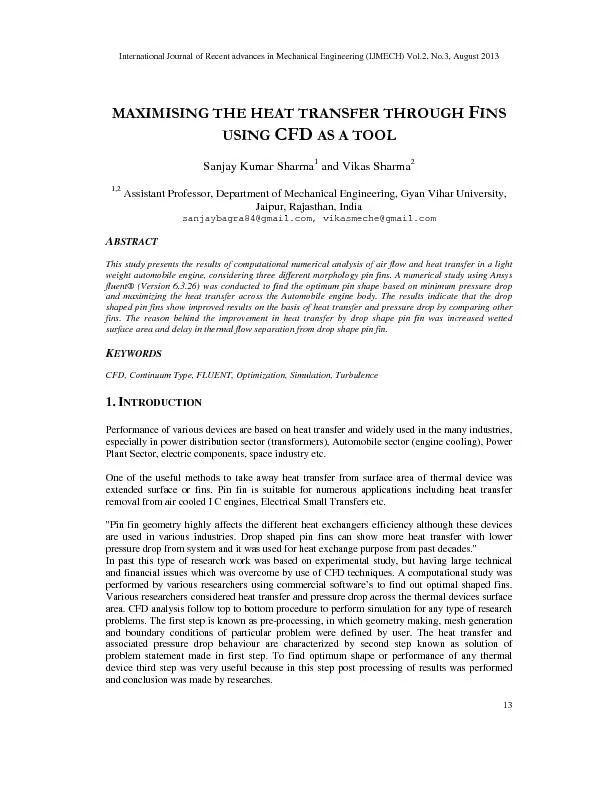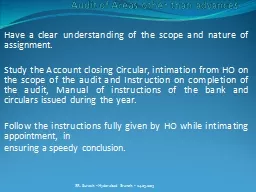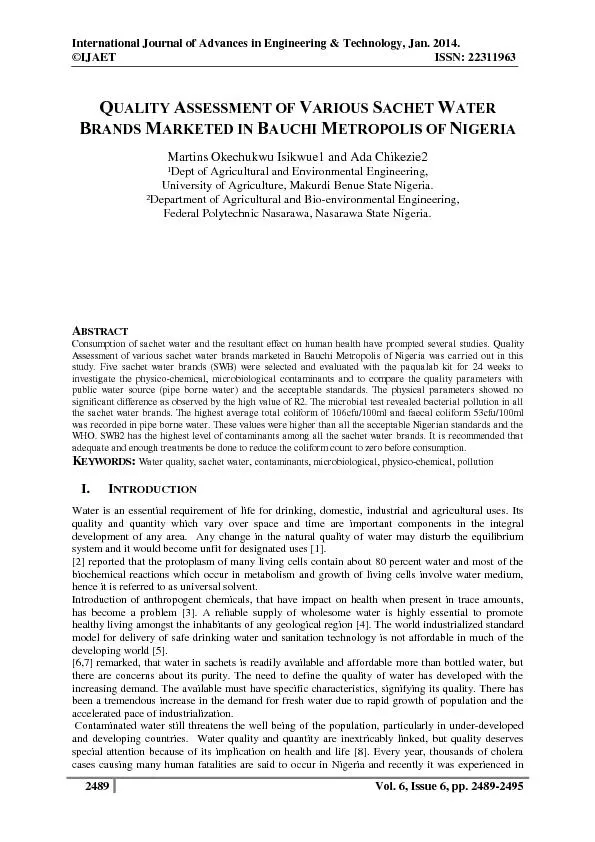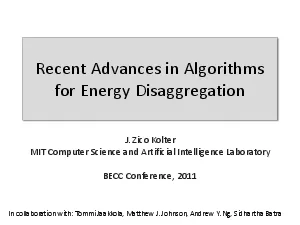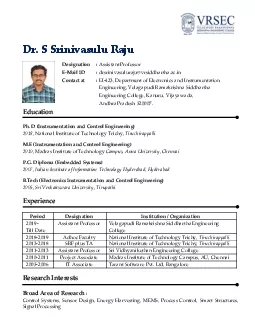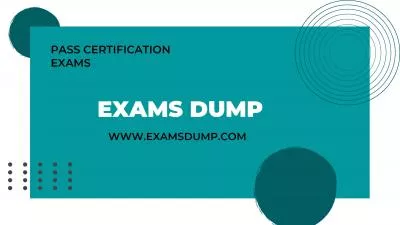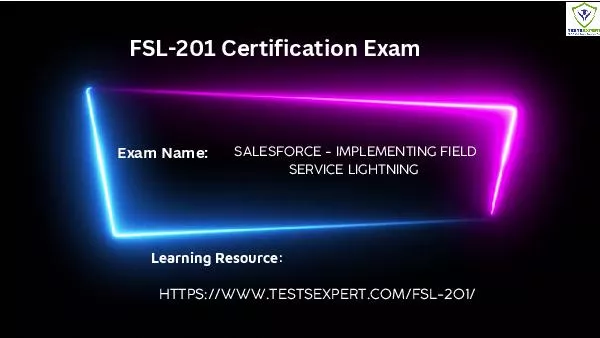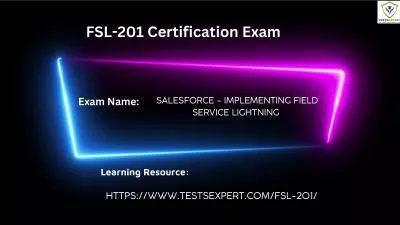PDF-International Journal of Advances in Engineering & Technology, May 201
Author : sherrill-nordquist | Published Date : 2016-08-08
Vol 1Issue 2pp126137 EB NFORMATION RECUPERATION FROM TREWN EXT ESOURCE YSTEMSAnil Agrawal Mohd Husain Raj Gaurang Tiwari Suneel Vishwakarma14Ambalika Institute of
Presentation Embed Code
Download Presentation
Download Presentation The PPT/PDF document "International Journal of Advances in Eng..." is the property of its rightful owner. Permission is granted to download and print the materials on this website for personal, non-commercial use only, and to display it on your personal computer provided you do not modify the materials and that you retain all copyright notices contained in the materials. By downloading content from our website, you accept the terms of this agreement.
International Journal of Advances in Engineering & Technology, May 201: Transcript
Download Rules Of Document
"International Journal of Advances in Engineering & Technology, May 201"The content belongs to its owner. You may download and print it for personal use, without modification, and keep all copyright notices. By downloading, you agree to these terms.
Related Documents

